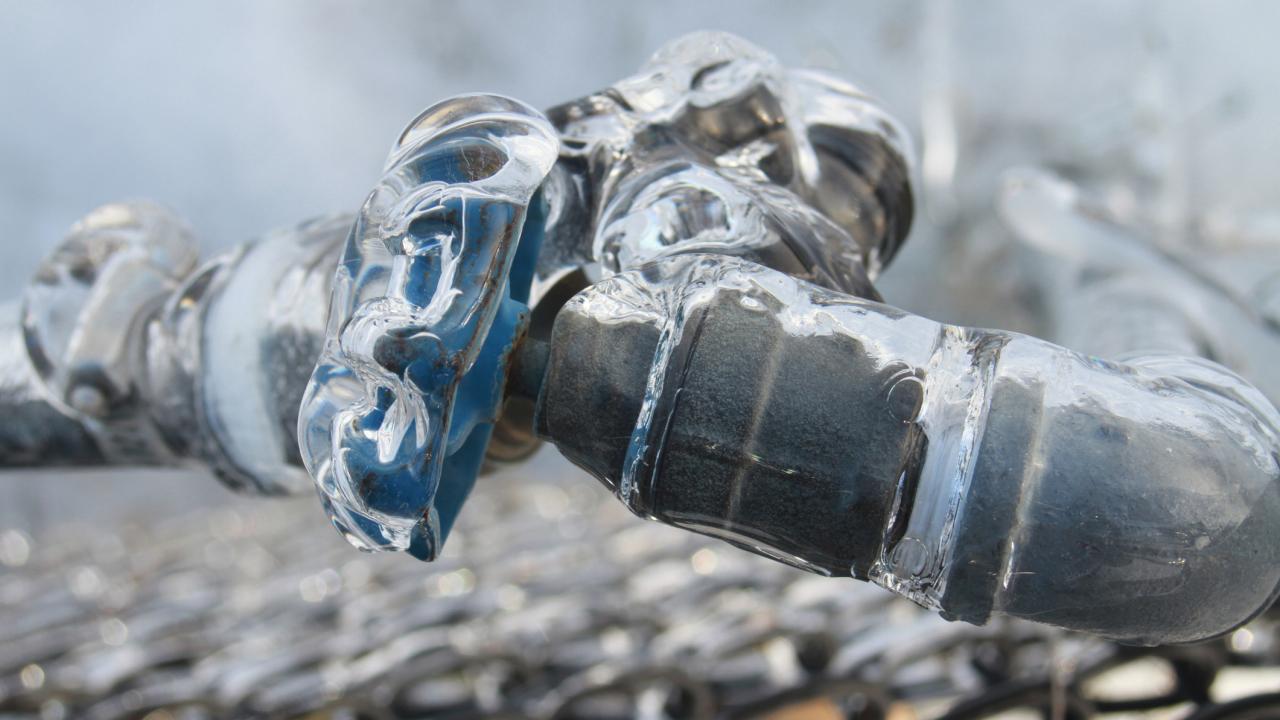We've encountered this great article relating to How to prepare your home plumbing for winter weather directly below on the net and decided it made good sense to quickly share it with you on this site.

Winter can wreak havoc on your plumbing, particularly by freezing pipelines. Right here's just how to avoid it from occurring and what to do if it does.
Intro
As temperature levels drop, the danger of icy pipelines rises, possibly resulting in costly repairs and water damage. Recognizing how to avoid icy pipes is essential for homeowners in chilly climates.
Avoidance Tips
Insulating at risk pipes
Wrap pipes in insulation sleeves or utilize warmth tape to secure them from freezing temperature levels. Concentrate on pipelines in unheated or external locations of the home.
Heating strategies
Maintain indoor areas sufficiently heated, specifically areas with plumbing. Open cupboard doors to allow cozy air to circulate around pipelines under sinks.
Just how to recognize icy pipes
Look for reduced water circulation from taps, unusual smells or sounds from pipes, and visible frost on subjected pipes.
Long-Term Solutions
Architectural modifications
Take into consideration rerouting pipes far from exterior wall surfaces or unheated locations. Add added insulation to attics, basements, and crawl spaces.
Upgrading insulation
Buy top quality insulation for pipelines, attic rooms, and walls. Correct insulation assists keep regular temperature levels and minimizes the risk of icy pipelines.
Safeguarding Outdoor Plumbing
Garden hose pipes and exterior faucets
Detach and drain pipes yard tubes prior to winter season. Set up frost-proof spigots or cover outdoor taps with shielded caps.
Recognizing Icy Pipelines
What triggers pipelines to freeze?
Pipelines freeze when subjected to temperature levels below 32 ° F (0 ° C) for expanded periods. As water inside the pipes freezes, it increases, taxing the pipeline wall surfaces and potentially causing them to rupture.
Threats and damages
Frozen pipelines can result in water supply disruptions, property damage, and costly fixings. Ruptured pipes can flood homes and create extensive structural damages.
Indicators of Frozen Pipes
Recognizing frozen pipes early can stop them from rupturing.
What to Do If Your Pipes Freeze
Immediate actions to take
If you believe icy pipes, maintain faucets open to alleviate stress as the ice melts. Make use of a hairdryer or towels taken in warm water to thaw pipes slowly.
Final thought
Preventing frozen pipelines requires positive measures and quick feedbacks. By comprehending the reasons, indications, and preventive measures, homeowners can safeguard their pipes throughout cold weather.
Helpful Tips to Prevent Frozen Pipes this Winter
UNDERSTANDING THE BASICS: WHY PIPES FREEZE AND WHY IT’S A PROBLEM
Water freezing inside pipes is common during the winter months, but understanding why pipes freeze, and the potential problems it can cause is crucial in preventing such incidents. This section will delve into the basics of why pipes freeze and the associated problems that may arise.
THE SCIENCE BEHIND FROZEN PIPES
When water reaches freezing temperatures, it undergoes a physical transformation and solidifies into ice. This expansion of water as it freezes is the primary reason pipes can burst. As the water inside the pipe freezes, it expands, creating immense pressure on the walls. If the pressure becomes too great, the pipe can crack or rupture, leading to leaks and water damage.
FACTORS THAT CONTRIBUTE TO PIPE FREEZING
- Low Temperatures: Extremely cold weather, especially below freezing, increases the risk of pipes freezing.
- Uninsulated or Poorly Insulated Pipes: Pipes located in unheated areas, such as basements, crawl spaces, or attics, are more prone to freezing. Insufficient insulation or lack of insulation altogether exacerbates the problem.
- Exterior Wall Exposure: Pipes running along exterior walls are susceptible to freezing as they encounter colder temperatures outside.
- Lack of Heating or Temperature Regulation: Inadequate heating or inconsistent temperature control in your home can contribute to frozen pipes.
PROBLEMS CAUSED BY FROZEN PIPES
WHY CERTAIN PIPES ARE MORE PRONE TO FREEZING
- Pipe Bursting: As mentioned earlier, the expansion of water as it freezes can cause pipes to burst, resulting in significant water damage.
- Water Damage: When pipes burst, it can lead to flooding and water damage to your property, including walls, ceilings, flooring, and personal belongings.
- Structural Damage: Prolonged exposure to water from burst pipes can compromise the structural integrity of your home, leading to costly repairs.
- Mold and Mildew Growth: Excess moisture from water damage can create a favorable environment for mold and mildew growth, posing health risks to occupants.
- Disrupted Water Supply: Frozen pipes can also result in a complete or partial loss of water supply until the issue is resolved.
https://busybusy.com/blog/helpful-tips-to-prevent-frozen-pipes-this-winter/
- Location: Pipes located in unheated or poorly insulated areas, such as basements, crawl spaces, attics, or exterior walls, are at higher risk of freezing.
- Exterior Pipes: Outdoor pipes, such as those used for irrigation or exposed plumbing, are particularly vulnerable to freezing as they are directly exposed to the elements.
- Supply Lines: Pipes that carry water from the main water supply into your home, including the main water line, are critical to protect as freezing in these lines can affect your entire plumbing system.
- Underground Pipes: Pipes buried underground, such as those connected to sprinkler systems or outdoor faucets, can be susceptible to freezing if not properly insulated.
:strip_icc()/snow-outdoor-faucet-pipes-4af65d1e5e904fb1aa7bf74071fe5d89.jpg)
I hope you enjoyed our part on How to Prevent Your Pipes From Freezing. Thank you for taking the time to browse our blog. So long as you appreciated our blog posting if you please don't forget to pass it around. Thanks so much for taking the time to read it.
Visit Our Site
Comments on “Shielding Your Pipes from Freezing Issues: Essential Strategies”